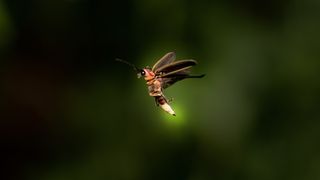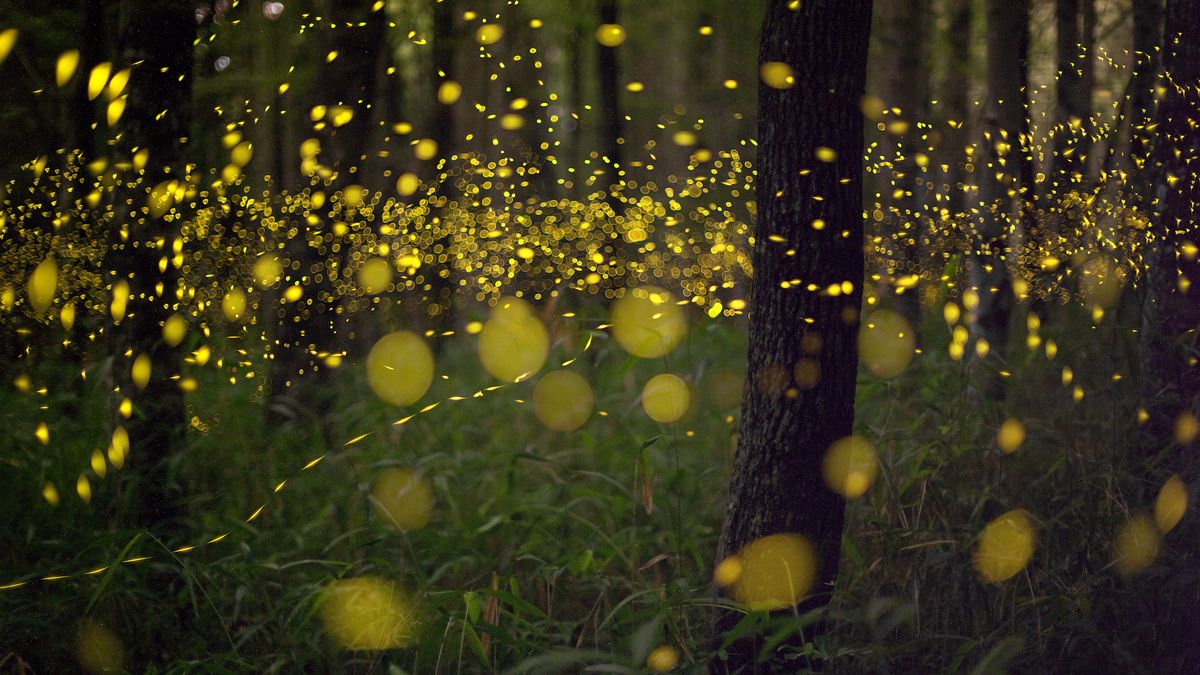How do fireflies glow?
It’s one of the hallmarks of summer in some parts of the United States: fireflies twinkling at night. The ability of fireflies to produce their own light is called bioluminescence, which occurs in select animals, bacteria and fungi around the world. Most of these creatures live in caves or oceans. But a handful live where humans can see them, including the more than 2,000 species of beetles that make up the firefly family.
So we know what the effect is called. But how do fireflies (family Lampyridae), also called fireflies, create these dazzling displays?
The key to their light is a chemical reaction based on a compound called luciferin, he said Timothy Fallona biochemical geneticist at the University of California, San Diego.
Luciferin creates light by losing electrons—a process called oxidation—in the presence of adenosine triphosphate (ATP), a molecule that provides energy to cells, and magnesium. This reaction is mediated by the enzyme luciferase. Fireflies have light organs in their abdomen where these reactions occur that contain a a layer of crystallized uric acid which helps to reflect and enhance light.
This luciferin and luciferase utilization system has evolved independently several times in bioluminescent animals, including another group of transilluminating beetles called Sinopyrophoridae.
Related: Which group of animals has the most species?
Only in the last few hundred years have scientists begun to understand how some living things are able to create light. One of the first people to make progress on this was a 17th-century Fellow of the Royal Society of Oxford, who discovered that air was necessary for a bioluminescent fungus to glow.
In fact, oxygen is one of the main components of firefly bioluminescence.

The glow starts early for fireflies. The pupae – and even the eggs – can produce light, perhaps as a signal to predators that they will not have a good meal, as some of them are poisonous due to chemicals called lucibufagins, which they synthesize from their diet. When fireflies complete metamorphosis and reach adulthood, they form new light organs. But the overall system is the same, with light coming from inside special cells found in light organs on the underside of some fireflies that turn them. yellow, orange, green or even blue.
These cells are overflowing with luciferin and luciferase, as well as an unusually high number of mitochondria. These tiny organelles pump out the ATP fireflies need to start a chemical reaction. Fireflies turn the light on and off by pumping oxygen into these cells. No oxygen means darkness. Lots of oxygen? You’re glowing.
This switch is important for US East Coast fireflies, which as adults use flashing signals to find the right breeding partner. Finding mates as a beetle can be difficult, and each flashing species has evolved its own light sequence to distinguish itself from the others. That makes bioluminescence “a Morse love song in light,” he said Lynn Faust, an independent firefly researcher based in Knoxville, Tennessee. “With their extremely short adult lives, it’s a race against time” to find a mate.
Scientists have come a long way to understanding the science behind firefly bioluminescence. But countless species of fireflies remain undocumented in Asia and Africa, and researchers are still trying to understand how the beetles first developed their glow-in-the-dark specialty 130 million to 140 million years ago, according to research published on BioRxiv preprint database.
“The biggest unanswered questions are, like, what are all the genes involved in bioluminescence?” Fallon said.
A major breakthrough occurred in 1985, when researchers discovered the gene responsible for the production of luciferase. This enzyme is now used in biomedical research to artificially illuminate specific proteins in plants and animals. In 2024, researchers in Wuhan, China discovered two more genes in Aquatica leiia rare aquatic firefly that they suspect may help place the lantern—the glowing organ of the adult firefly—into the abdomen and enable light-generating genes such as luciferase.
In addition to deciphering the bioluminescence of fireflies, scientists are still learning what causes fireflies to tick in the wild. In recent years, fireflies have declined due to overpopulation, habitat loss, and climate change. “We know so little” about fireflies in their natural habitat, Faust said. “How on earth can we preserve and protect [them] if we barely understand their most basic requirements?”














Post Comment